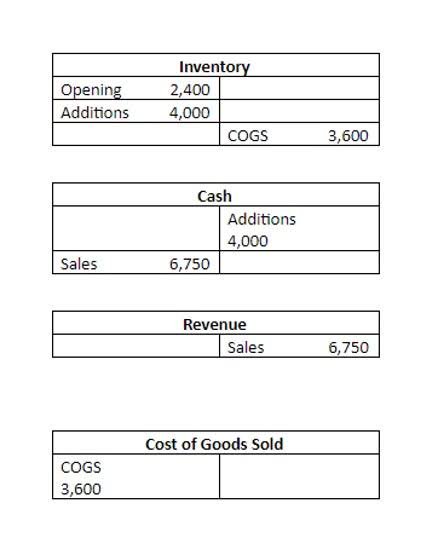
The breakdown for Org A shows it has spent all its available cash on equipment or its facility and has an accumulated operating deficit of $20,000. Org B’s presentation shows it has planned for financial stability by maintaining operating cash and setting aside reserve funds in addition to investing in some equipment. Showing the net assets in this greater detail would help Org A’s board to understand why the organization has positive net assets but is still struggling to pay the bills on time. And those journal entries are on the right in the second in the second trial bounce down below if you if you want to take a look at those not going to get into that in more detail up.

Financial Management Strategies

As the designated time frame elapses, the restrictions are lifted, and the funds can be reallocated. This type of release is particularly beneficial for long-term planning, as it provides a predictable timeline for when additional resources will become available. It also allows nonprofits to align their financial strategies with donor expectations, ensuring that funds are utilized in a timely and effective manner. This entire process promotes clarity, transparency, and trust in nonprofit financial reporting. Donors can see that their contributions are being used for the intended purposes, and the organization ensures that funds are handled responsibly and in compliance with donor wishes. Let’s say a nonprofit organization receives a donation of $10,000 with a restriction that it must be used for a specific program.
What is the Release from Restriction Concept in Nonprofit Accounting?
Columns are added to the right of the “Existing” balance columns to show debits, credits, and the new balance for each line item. Net Assets have a “natural” credit balance, so a credit to a net what are unrestricted net assets asset account will increase the balance, and a debit to that account will decrease it. As mentioned by our Allstar @qbteachmt, Unrestricted Net Assets is not an actual entry as it only represents your math for the first date of the new fiscal year. However, you can close this account by making a journal entry. The net income for the current fiscal year will be reflected in the Equity account. As mention by our Allstar @qbteachmt above, Unrestricted Net Assets isn’t a real entry as this is your math for the first date of the new fiscal year.
- Since the file is relatively new, I simply edited the first entries in the checking and savings accounts, and changed “Opening Balance Equity” to “Unrestricted Net Assets”.
- When a nonprofit organization receives donations with donor-imposed restrictions, the organization cannot use those funds for general operating purposes until the restrictions are met.
- The way this was set up is with individual “classes” instead of accounts and I need to provide each class it’s own Transaction Detail by Account.
- I won’t get into it, I’ll put this problem at the bottom of the course.
- Also, I suggest consulting your accountant for guidance on how to handle Unrestricted Net Assets, including whether to remove the account or not.
Account
These entries are not merely administrative tasks; they play a significant role in the financial statements of the organization. By accurately recording the release of net assets, nonprofits can provide a clear picture of their financial health and resource allocation. This transparency is essential for maintaining donor trust and fulfilling regulatory requirements.


This way, you can provide each class its Transaction Detail by Account report. Hi Jovy, follow up question will this account automatically close to Retained earnings?
Nonprofits often use specialized accounting software, such as QuickBooks Nonprofit or Blackbaud Financial Edge, to streamline this process. These tools offer features tailored to the unique needs of nonprofit accounting, including automated journal entries and real-time financial reporting. By leveraging such software, organizations can ensure that their financial records are both accurate and up-to-date, facilitating better decision-making and compliance with accounting standards. In this example, the nonprofit has $150,000 in unrestricted net assets, meaning these funds can be used for any purpose by the organization.

- This is often achieved by maintaining separate accounts for each category within the organization’s chart of accounts.
- And then our other worksheets that we’re going to be working with including the accounts and then the journal entry.
- In order to split net income and retained earnings into the net asset accounts appropriate for our purposes, we need a little work-around.
- Nonprofit organizations must develop comprehensive budgets that clearly distinguish between restricted and unrestricted funds.
- For instance, the total net asset balance in all three examples below is $100,000.
- And in essence, we’re going to consider, you know, the cash being adjusted.
And on this side, we used two accounts, right, we use two accounts, I could have used just one account, net assets released and applied without restricted and unrestricted. Sometimes I kind of like the two accounts because it gives me ledger account like a double check that these two should always be equal and opposite by account. And it should also net out to be equal and opposite in the total. So we might talk about that a little bit more at a future presentation. Nonprofit organizations often receive unrestricted funds, which are donations not limited by donor stipulations. These funds are integral for covering operational expenses and investing in areas crucial for achieving the organization’s mission.
- And they’re going to be net assets released, I’m just going to call it unrestricted net assets released restricted, we could just set up one account and use the use the, the classes to break them out.
- On the other hand, permanently restricted funds are typically endowments where only the income generated can be used, not the principal amount.
- Now what we’re imagining here to happen is that we’re going to have this transfer that we’re going to be having, and it’s going to be going from the restricted to unrestricted.
- Restricted funds are monies received by a nonprofit with conditions attached, dictated by the donor.
- This reclassification not only reflects the fulfillment of donor-imposed conditions but also showcases the nonprofit’s ability to effectively manage and utilize its resources.
- For example, if a contribution is for a specific project, the funds are temporarily restricted until used for that project.
Net assets released from restrictions
In other words, restricted is going to go down unrestricted is going up, just as we can see here in our Excel worksheet. These technologies serve as an essential part of the bookkeeping Accounting for Churches and accounting system for nonprofits, ensuring that funds are meticulously tracked and utilized in adherence to donor restrictions and regulatory requirements. Accurate categorization of funds in nonprofits ensures financial transparency and complies with donor intent.
